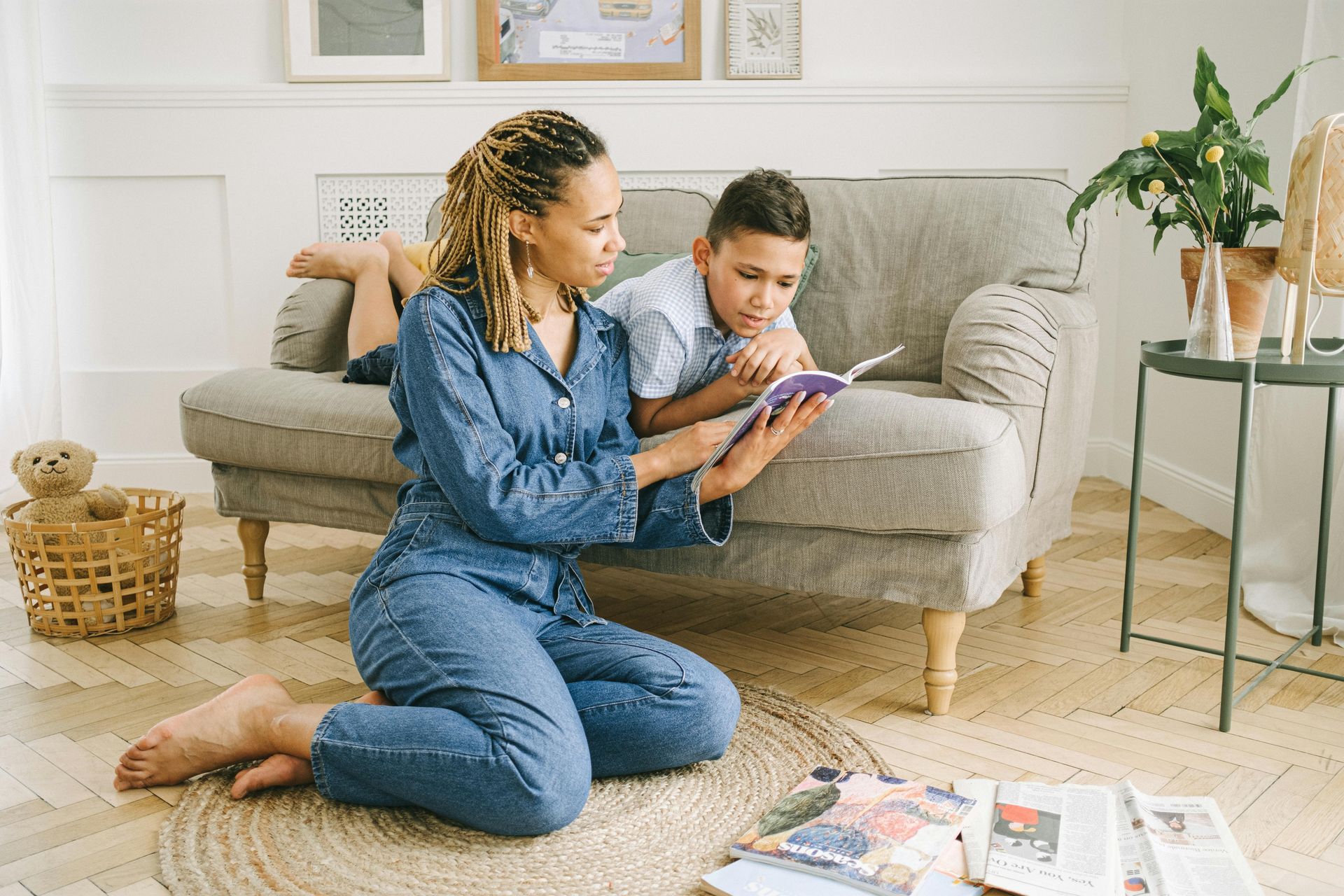Blog
What Makes an Ideal Reading Environment?
Environment is a very powerful driver of behavior. We’re affected by so many variables like light, noise, temperature, and space. All of these factors and more have the potential to impact our mood, energy, motivation, efficiency, and sense of security. The significance of environment is something we all have experience with, and for that reason, we often search for ways to control our surroundings. That’s why people spend time maximizing their workspace for comfort and efficiency, finding a gym where they feel safe and motivated, or cleaning out the garage every spring. Consider the environment you’re in right now. How is it affecting you? What things do you have control over?
There are an unlimited number of variables surrounding and affecting us at all times. Reading time is no exception. So, what can we do to create an optimal reading space for our children? Here are some easy and effective ideas:
1. Minimize distractions.
- Make your reading space a device-free zone.
- Smartphones are endlessly entertaining. With an unlimited number of apps and notifications, it can be hard to resist the temptation to respond to that text, play one more game, or scroll for just a few minutes on a favorite social media platform. Set all devices (don’t forget about watches!) to “Do Not Disturb” and keep them in a basket out of reach and out of sight.
- Keep your reading space tidy.
- Messy space can be distracting, or at the very least, create a feeling of unease. An ideal reading environment is tidy and organized.
- Keep your reading space separate from other spaces.
- A reading space should be a space for just that—reading. Conversations, toys, activities, or even too much movement can interfere with a reader’s ability to focus. Even if the reading space is part of another room, dedicate a corner or a small section of the room for the sole purpose of reading.
2. Create comfort.
- Make your reading space a physically comfortable place to spend lots of time.
- When you hear the phrase, “Curl up with a good book,” what do you picture? Pillows, blankets, and fluffy rugs are a great way to cozy-up a space. Bean bags, rocking chairs, hammocks, and small sofas are also comfortable places to read. Or, help your young readers build a reading fort!
- Lighting, temperature, and ventilation are all huge contributors to physical comfort. Open a window to let in some fresh air and natural light. If that’s not possible, try turning on a fan and adding some reading lamps or string lights.
- Pay attention to background noise.
- Everyone has different preferences when it comes to background noise. Some people like it quiet, while others enjoy listening to instrumental music or white noise. If there are multiple readers sharing a space, try to find a solution that works for everyone. Headphones and earplugs are great options to provide more individual choice.
- Respect privacy.
- Reading time can make people feel vulnerable. A person may feel embarrassed about what they're reading or how they sound reading aloud. Privacy can help your readers feel more comfortable and secure. Bookshelves or curtains can function well as dividers.
3. Increase engagement.
- Ensure your reading space has a variety of materials.
- It’s important to give readers lots of options. Magazines, novels, newspapers, comics, journals, articles, biographies, poetry, encyclopedias, catalogs, dictionaries, scripts, and brochures are great additions to any reading collection.
- Have a "top picks" shelf.
- Get your readers invested in the reading environment by allowing them to contribute to it. Set up a space for them to display their top picks, and encourage them to write a review.
- Be mindful of your readers' energy levels.
- Food can be a great way to help the body stay alert. Coffee and tea are beverages that are often associated with reading time, but even just having a fresh glass of water within reach can be helpful. Gum or mints can be good options, too. If you want to go above and beyond, find a special treat to only serve during reading time. Your young readers will associate the delicious snack with the activity of reading.
- Some young readers might have trouble sitting still for so long. Fidget toys or a book stand are good options for allowing movement during quiet reading time.
As an added bonus, we asked our followers on social media, “What makes an ideal reading environment?” Read their responses below!
- Good light and sounds of nature!
- No phone
- Pillows and blankets
- For me, just enough light!
- White noise
- A comfy beach chair and the sound of waves!
- Lots of choices in reading materials
- Ideally a quiet area with a comfy chair! But the most important thing for me is just having something interesting to read :)
- For grown-ups: a cup of coffee!
- Breeze coming in an open window
- A comfy chair
- An organized bookshelf!
- Natural light
Highlighted Posts


Ready to see an improvement in your child's reading?
Sign up today and get seven days for FREE.
One Minute Reader is just $8 per month after your free trial.
